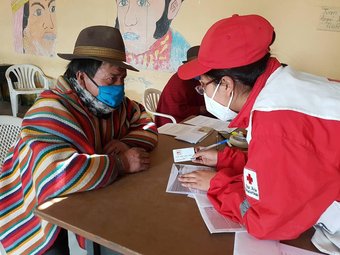Ecuador
Key facts
Hazards covered by anticipation
El Niño (intense rainfall) | Volcanic ash
No. of people reached by anticipation (activation)
Red Cross: 1,000
Anticipation partners in country
Ecuadorian Red Cross | German Red Cross | Red Cross Red Crescent Climate Centre
Inform Risk Index (2022)
Hazard and exposure: 4.6
Vulnerability: 4.8
Lack of coping capacity: 4.0
Total: 4.5 (medium)
Rank: 61
Photo: Fernando Nunoz / IFRC
Country profile
Ecuador spans three geographically diverse climate zones: the high Andean mountains, the Amazon rainforest and the arid coastline. Each zone presents unique hazards. For example, volcanoes in the Andes erupt periodically, spewing toxic ash that compromises people’s health, kills livestock and destroys crops. Intense rainfall associated with El Niño causes flooding and landslides, which result in the loss of human life, damage to homes and infrastructure, disruption to livelihoods and economic activities, and a rise in waterborne diseases. Other hazards include earthquakes, storm surges, epidemics and drought.
Ecuador is a culturally diverse, upper middle-income country. However, highly populated urban areas, weak land-use and building codes that do not sufficiently address potential risks, and environmental degradation all contribute to the population’s high vulnerability to hazards. Over 60 per cent of the population lives in areas exposed to multiple hazards.
Ecuador has a decentralized framework for disaster risk management. Since 2017, the Ecuadorian Red Cross has been working on Early Action Protocols for volcanic ash and intense rainfall in close collaboration with these structures.
Projects
Strengthening FbF readiness in Ecuador
Since 2017, the Ecuadorian Red Cross has been working to develop Early Action Protocols (EAPs) for volcanic ashfall and intense rainfall associated with El Niño. The EAP for Volcanic Ash was activated in September 2020.


